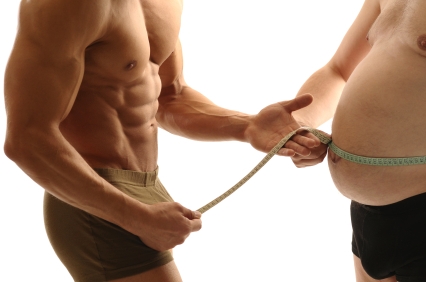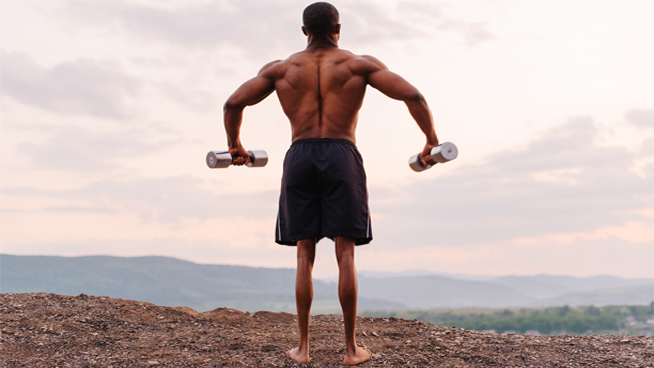What’s The Best Cheap Whey Protein Powder?
 Below are our recommendations of the top, affordable protein powder online. Whey protein is one of the most convenient and easily absorbed forms of protein for fitness fanatics interested in losing weight and building muscle.
Below are our recommendations of the top, affordable protein powder online. Whey protein is one of the most convenient and easily absorbed forms of protein for fitness fanatics interested in losing weight and building muscle.
Journey with me WAY back to the time when you last read or heard “Little Miss Muffet, sat on her tuffet, eating her curds and whey.” It’s undeniably true that nursery rhymes can be invaluable teachers of lifelong lessons.
“Don’t use breadcrumbs to mark a trail in the forest.”
“Don’t put a well at the top of a hill and then send your two clumsy kids to get water.”
“Don’t sit high up on a wall if you’re an egg.”
You get the idea.
A little recognized lesson is that if Miss Muffet had been more diligent in eating her curds and whey, she may have had the strength and lean muscle needed to pound the spider that came and sat down beside her. Instead, she simply let it frighten her away. Don’t be a Muffet!
Whey Protein Powder – The Definitive Guide
- High Quality Keto Friendly Protein: This doctor-developed whey protein with MCTs is rapidly absorbed by the body.
- Optimal Protein Source: Perfect Keto contains all essential Amino Acids, including Branched-Chain Amino Acids (BCAAs). It has 15g whey protein isolate, (90% from grass-fed dairy), which research has shown supports healthy weight loss, builds lean muscle, boosts muscle strength, and curbs appetite.
- Boosts Satiety: Since it’s high in fats, with 5g of MCT Oil Powder and 4g of high quality fats, the Perfect Keto Whey will keep you fuller longer. Enjoy after a workout to speed muscle recovery and tame hunger, or mix up in the morning to tide you over until lunch.
- No Nitrogen Spike: The amount of protein in a powder is measured by its nitrogen content, and many companies “spike” their powders with cheap amino acids to make the product appear to have more protein and to keep production costs down. But this means less complete protein per serving. Perfect Keto does not nitrogen spike, so you’re getting the real deal.
- Convenient On The Go: Easy to mix and take on the go, enjoy as a portable breakfast or pre- or post-workout snack for a balance of nutrients that’ll give a boost in energy.
- Packaging May Vary - New look, with the same trusted quality
- GOLD STANDARD 100% WHEY BLEND – 24g blended protein consisting of whey protein isolate, whey protein concentrate, and whey peptides to support lean muscle mass – they don't call it the GOLD STANDARD of quality for nothing
- OVER 5G OF BCAAS – help build lean and strong muscles with naturally occurring BCAAs
- 3-4G CARBS, 1-3G SUGAR, AND 1-1.5G FAT, GLUTEN FREE, No Sucralose in Double Rich Chocolate Flavor
- INSTANTIZED – improves mixability to prevent lumps and clumps
- ONLY ONE INGREDIENT: 100% Grass Fed Pure Whey Protein with zero additives. Naked Whey no artificial sweeteners, flavors, or colors and is GMO-Free, No rBGH or rBST, Soy Free and Gluten-Free.
- ALL NATURAL WHEY: Our Grass Fed Whey is sourced from small dairy farms in California to bring you a non-denatured whey packed full of essential amino acids, clean protein and glutathione.
- MAXIMUM NUTRITION: 25g of Protein, 2g of Sugar, 3g of Carbs, 120 Calories, and 5.9g of BCAAs (branched-chain amino acids) per serving.
- COLD PROCESSED: Unlike most whey protein powders, Naked Whey is cold processed to ensure zero contamination from chemical detergents (no acid or bleach), synthetic additives, or heavy metals, and this maintains important naturally occurring growth factors.
- THE PERFECT WORKOUT PARTNER: Create pre and post workout whey shakes, smoothies and recipes to take your muscle gains and recovery to new heights.
- You will receive one 5 lb. container of Body Fortress Chocolate Super Advanced Whey Protein Powder
- SCIENTIFICALLY ADVANCED BLEND: Body Fortress Chocolate Whey protein powder contains 60 grams of protein and delivers 12 grams of BCAA’s per two scoops
- TRAIN HARDER: Chocolate protein powder contains amino acids plus Creatine for improved training recovery (1)
- DELICIOUS: Body Fortress Chocolate Whey Protein Powder contains zero aspartame and is gluten free
- USE ANYTIME: Chocolate protein drinks are ideal for pre and post workout, or as needed throughout the day in order to meet your daily protein requirements
- Packaging May Vary - New look, with the same trusted quality!
- GOLD STANDARD 100% WHEY BLEND – 24g blended protein consisting of whey protein isolate, whey protein concentrate, and whey peptides to support lean muscle mass – they don't call it the GOLD STANDARD of quality for nothing
- OVER 5G OF BCAAS – help build lean and strong muscles with naturally occurring BCAAs
- 3-4G CARBS, 1-3G SUGAR, AND 1-1.5G FAT, GLUTEN FREE, No Sucralose in Double Rich Chocolate Flavor
- INSTANTIZED – improves mixability to prevent lumps and clumps
- 100% non-GMO whey protein isolate from grass-fed* cows
- 25G protein per serving; 30 servings per container
- Natural chocolate flavor sweetened with stevia leaf extract
- No added or artificial sugars. No artificial colors or flavors
- Soy free, gluten free, no added rBGH/rBST
- LEVELS WHEY PROTEIN: Each scoop of Levels Vanilla Bean Whey contains 24g Protein, 5.4g BCAAs (branched-chain amino acids), and no added sugars. Trusted by athletes, fitness enthusiasts and daily grinders everywhere, our whey is crafted for everyone’s lifestyle.
- NOTHING FAKE: Levels Whey is naturally delicious. That means no hormones, no GMOs, no added sugars, no soy, no gluten, no bleach, no fillers, and no artificial flavors or sweeteners.
- SIMPLE & CLEAN: No fake vanilla flavor here. Levels Vanilla Bean Whey is made with delicious Madagascar Vanilla Extract and lightly sweetened with monk fruit extract.
- QUALITY FIRST: Quality milk tastes better, way better. That’s why grass-fed hormone-free dairy is the only dairy we use to make our whey protein concentrate. Whey concentrate is the least processed form of whey, which means it’s loaded with high-quality complete protein and essential amino acids.
- MADE IN THE USA: Levels Whey Protein is made in the U.S.A. and is undenatured to protect bioactivity and naturally occurring growth factors. Each batch is cold-process microfiltered and blended with non-gmo sunflower lecithin for that insanely easy mixing you expect.
- CLEAN GRASS-FED WHEY PROTEIN: SFH PURE Whey Protein is a highly bioavailable (easy to absorb and digest) whey concentrate. An excellent protein choice for all ages, it provides a number of benefits in areas including sports nutrition, weight management, immune support, bone health, and general wellness. Safe for children, pregnant, and nursing. Completely non-GMO and free of soy, gluten, artificial flavors and sweeteners, and rBST.
- YEAR ROUND GRASS FED COWS: We set ourselves apart by sourcing from year round grass fed, free range cows that are never treated with antibiotics or bovine growth hormones. For us, it’s not just a label - it’s at the heart of our integrity as a brand. Our cows are ethically treated and raised on the greenest pastures in New Zealand, which is the only place in the world where it's possible for them to be grass fed outside all year round
- TRUST WHAT’S IN THE BAG: With no proprietary blends or long lists of other hard to pronounce ingredients, there’s nothing to hide when the ingredients are this clean. Because of the clean sourcing, the protein is naturally high in BCAA's. The protein is non-denatured and minimally processed leaving all of these health benefits fully intact.
- STRONGER, FASTER, HEALTHIER: Our proteins mix and taste great with water or your favorite type of milk, and are easily absorbed by your body. SFH PURE Whey has low lactose content, and is a rich source of the essential amino acids needed on a daily basis by the body.
- INCREDIBLE TASTE: Protein powder has never tasted so good! Mixing it in a protein shake or baking into other protein foods for an added nutrition boost. As a dietary supplement, mix one serving with 6 to 8 oz water or your favorite beverage. May be taken anytime during the day. Store in a cool dry place. Do not refrigerate. Once opened, use within 90 days.
The process of acidifying milk yields both a solid component, called the curd, and a liquid component called whey. The whey can then be turned into powder by removing the water, and sold to the muscle craving masses all over the world. Whey protein is one of the most convenient and easily absorbed forms of protein available for fitness fanatics interested in getting muscle fast. What many people don’t realize is that there are actually 3 major forms of protein that coexist under the term “whey protein”. Below is a synopsis of each of the 3 major types of whey protein.
1. Concentrate: The first major form of whey protein, known as concentrate, is a byproduct of the cheese manufacturing process. It can vary in potency from 29%–89% protein by weight, and is relatively low in both fat and cholesterol compared to other forms of protein. It’s important to note that because concentrate is the least processed form of whey protein, it typically has the highest level of bioactive compounds, and carbohydrates in the form of lactose (an important factoid for those with lactose intolerance). An assortment of scientific literature and case studies have acknowledged a likely relationship between bioactive compounds and protective effects against many adverse health conditions including hypertension, cardiovascular disease, and cancer.
2. Isolate: The second major form of whey protein, known as isolate, is usually 90%+ protein by weight and is also typically lower in bioactive compounds. Whey protein isolate is a purer form of protein that’s a staple for many fans of fitness and fitness freaks looking to build lean muscle mass. My wife happens to be lactose intolerant, but by mixing a whey protein blend (concentrate and isolate) with Silk -Light brand soymilk, she is able to include whey protein in her fitness program without any symptoms. This is most likely because whey isolate is processed to remove much of the fat, lactose, and carbohydrates. Of course everyone’s body is unique, so if you’re lactose intolerant I recommend testing small amounts to start with. As always it’s generally best practice to consult your physician before starting any new exercise, or nutrition plan. A drawback of isolates more refined nature is that it tends to be a bit pricier than whey protein concentrate.
o Both of the above mentioned whey protein types are mild to slightly milky in taste.
3. Hydrolysates: The third and final type of whey protein is called whey protein hydrolysates, which are predigested, partially hydrolyzed whey proteins. The process of hydrolization uses enzymes to breakdown the protein strands into smaller chains called peptides, which in turn allows them to travel through the digestion process much more quickly. As a more processed protein than concentrate or isolate, it’s very potent and is very rapidly absorbed. I’ve found that it’s common to find hydrolysates in a blended form, such as Optimum Nutrition’s 100% Any Whey Instantized Whey Protein (shown below), but it’s a bit harder to find in its pure form than the other two types. It’s also important to note that highly-hydrolysed whey has proven to be less allergenic to those with milk allergies than other forms of whey, which is why it’s commonly found as a component in infant formula. As the most processed and pure it’s also generally the highest priced of the three major forms of whey protein.
Casein: The type of protein that I’ve deemed to important not to mention, despite the fact it’s not a whey protein, is casein protein (from the Latin caseus for “cheese”). Of the protein found in milk about 20% is whey protein, and the other 80% is casein. In previous posts I’ve touted the benefits of taking whey protein, especially after workouts, because of how quickly it’s absorbed by the body (as fast as 15 minutes). On the flip side, an attractive molecular property of casein is its ability to gel/clot in the stomach, which as a result makes it a protein that releases amino acids into the bloodstream much slower and for an extended period of time. Whereas the release rates following ingestion of whey isolate tend to decline after 2 hours or so, release casein has been shown to last as long as 7 hours. This trait makes casein an excellent protein to incorporate into the diet of your fitness program when a slow and steady release of amino acids is desirable, such as in the evening hours before bed.
If your vegan checkout our review of the best vegan protein powders.
So you’ve got your protein powder, now what???
Checkout our collection of 144 Protein Shake Recipes!












